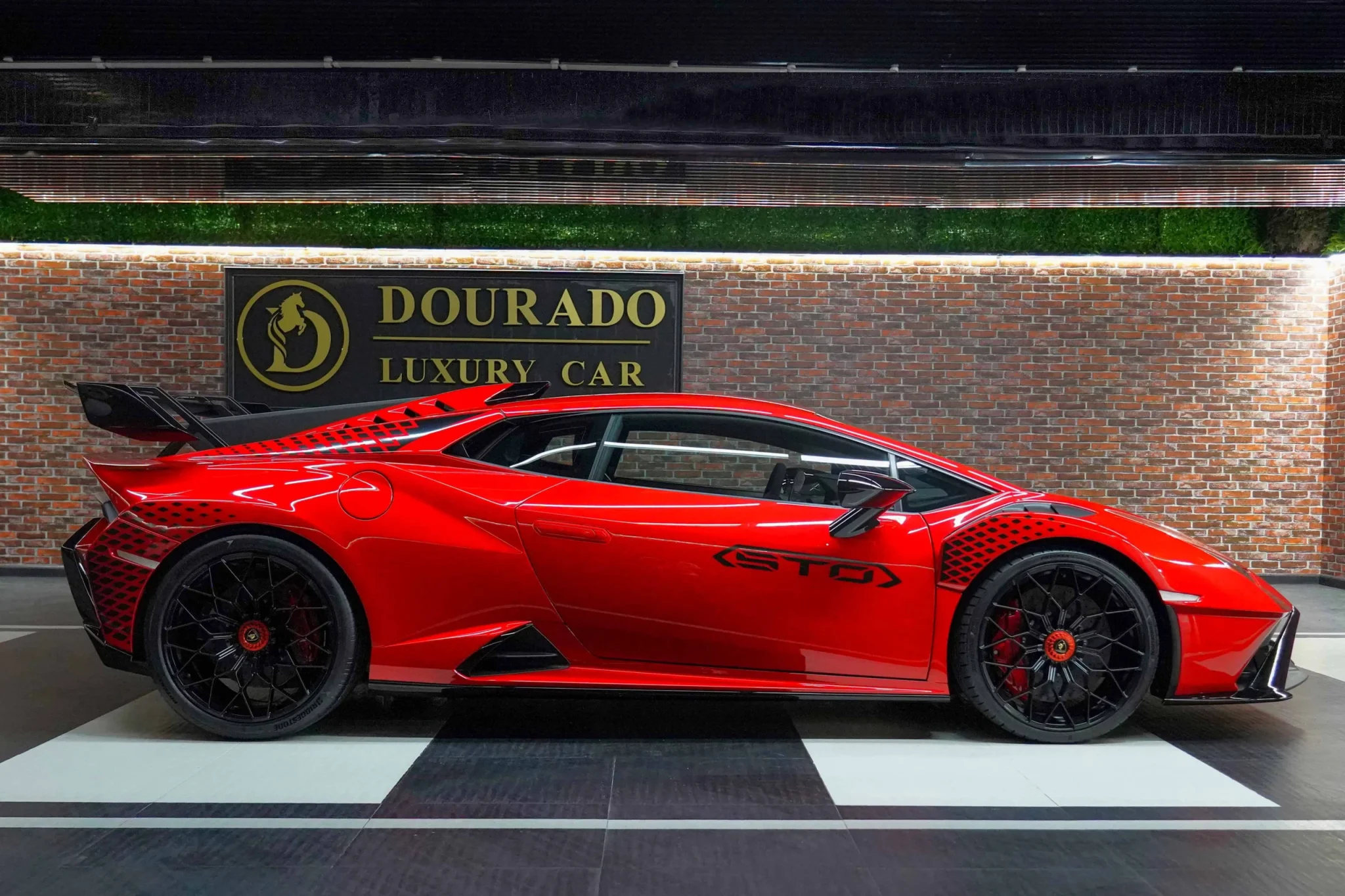In the realm of automotive engineering, few aspects are as crucial as aerodynamics. It’s the science of airflow over a vehicle’s body, determining its performance, stability, and efficiency. When it comes to supercars like the Lamborghini Huracan, aerodynamics play a pivotal role in achieving extraordinary levels of performance and handling. In this comprehensive guide, we delve into the aerodynamic prowess of the Lamborghini Huracan, exploring the engineering excellence that unleashes its full potential on the road and track. Dourado Luxury Car is a dealership or a private seller specializing in supercars, luxury cars and elite cars for sale in Dubai UAE.
1. The Science of Aerodynamics: Foundations of Performance
Aerodynamics is a fundamental aspect of automotive design, influencing everything from top speed and acceleration to handling and fuel efficiency. At its core, aerodynamics is about managing airflow around a vehicle to minimize drag and maximize downforce. For supercars like the Lamborghini Huracan, achieving the perfect balance between these two forces is essential for delivering the ultimate driving experience.
2. Design Philosophy: Form Follows Function
In designing the Lamborghini Huracan, engineers and designers adhere to the principle of “form follows function.” Every aerodynamic element serves a specific purpose, whether it’s reducing drag to improve straight-line speed or generating downforce to enhance cornering grip. From the aggressive front splitter to the sculpted rear diffuser, every curve and contour of the Huracan’s bodywork is meticulously crafted to optimize aerodynamic performance.
3. Active Aerodynamics: Adapting to Driving Conditions
One of the hallmarks of modern supercars is the integration of active aerodynamic systems that adapt to changing driving conditions. The Lamborghini Huracan Luxury car features advanced aerodynamic technologies such as active spoilers, variable air intakes, and adaptive aerodynamic surfaces. These systems adjust in real-time to optimize aerodynamic efficiency and stability, providing the driver with maximum performance and control in any situation.
4. Front Aerodynamics: Channeling Airflow for Performance
At the front of the Lamborghini Huracan, aerodynamic elements work in harmony to channel airflow for optimal performance. The prominent front splitter directs air underneath the car, reducing lift and increasing stability at high speeds. Meanwhile, air curtains and side air intakes manage airflow around the front wheels, reducing drag and improving cooling efficiency for the brakes and engine.
5. Rear Aerodynamics: Enhancing Downforce for Cornering Grip
In the rear of the Lamborghini Huracan, aerodynamic features focus on enhancing downforce to improve cornering grip and stability. The active rear spoiler adjusts its angle based on speed and driving mode, providing the ideal balance between drag reduction on straightaways and downforce generation in corners. Additionally, the sculpted rear diffuser accelerates airflow underneath the car, further reducing drag and creating negative pressure to suck the car onto the road.
6. Aerodynamics in Motion: The Huracan’s Dynamic Performance
On the move, the aerodynamics of the Lamborghini Huracan come alive, transforming it into a dynamic performance machine. As speeds increase, airflow over the bodywork becomes more critical, with aerodynamic elements working together to optimize stability and control. Whether carving through mountain passes or tearing up the racetrack, the Huracan’s aerodynamic prowess allows drivers to push the limits with confidence and precision.
7. Wind Tunnel Testing: Fine-Tuning for Perfection
Before a single Huracan rolls off the production line, it undergoes rigorous testing in the wind tunnel. Here, engineers subject the car to simulated airflow conditions to analyze its aerodynamic performance. By measuring factors such as drag coefficient, lift coefficient, and downforce generation, engineers can fine-tune the Huracan’s aerodynamics for maximum efficiency and performance.
8. Computational Fluid Dynamics (CFD): Virtual Aerodynamic Optimization
In addition to wind tunnel testing, Lamborghini employs advanced computational fluid dynamics (CFD) simulations to optimize the aerodynamics of the Huracan. By simulating airflow over the car’s bodywork in a virtual environment, engineers can quickly iterate design changes and assess their impact on performance. This allows for more efficient aerodynamic optimization and helps ensure that the Huracan delivers the highest levels of performance on the road and track.
9. Aerodynamics and Styling: A Marriage of Form and Function
While aerodynamics primarily serve a functional purpose, they also influence the aesthetic design of the Lamborghini Huracan. The sleek lines, aggressive stance, and sculpted bodywork of the Huracan aren’t just for show – they’re the result of aerodynamic optimization. Every curve and contour is carefully crafted to minimize drag and maximize downforce while exuding the unmistakable Lamborghini DNA.
10. Conclusion: Engineering Excellence Unleashed
In conclusion, the aerodynamics of the Lamborghini Huracan represent a pinnacle of engineering excellence, unleashing its full performance potential on the road and track. From its aggressive front splitter to its active rear spoiler, every aerodynamic element is meticulously designed and tested to optimize airflow and enhance driving dynamics. As a result, the Huracan delivers an exhilarating driving experience that pushes the boundaries of what’s possible in automotive performance. Whether slicing through the air at high speed or hugging the corners with precision, the Huracan’s aerodynamic prowess is a testament to Lamborghini’s commitment to pushing the limits of automotive engineering. Explore Dourado Luxury Car store in Dubai for latest luxury car models and car prices in Dubai UAE.

